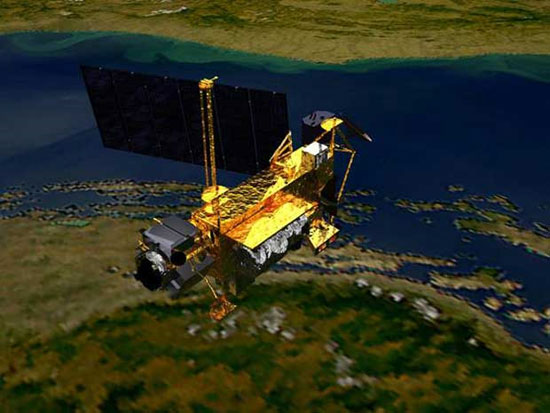Vietnam can catch satellite fragments
The US Aeronautics Agency (NASA) announces a nearly 6-ton satellite, about the size of a bus, will fall to earth tonight and many places can catch its debris, including Vietnam. .
>>>UARS satellite will fall sooner than expected
>>> American artificial satellite falls on the following weekend
Earlier, NASA said that the Planetary Research Satellite (UARS) fell to the earth yesterday, but it has just revised its prediction for the event to take place tonight at GMT, around midnight tomorrow. Cabinet. This is a NASA satellite.
BBC quoted NASA scientists as saying that UARS will break into more than 100 pieces during the fall. Most debris will burn out by the friction of the air, but some large pieces will not burn out. The remaining debris will fall into an area of 1,000 to 2,000km in length and 400 to 500km width.

Since water covers about 70% of the Earth's surface, the likelihood of unburnt fragments of UARS falling into the ocean is quite large. But they can also fall on the continent or the island. Every continent, except Antarctica, can become a place where debris lands. NASA scientists can only accurately predict the satellite's fall position about two hours before it enters the atmosphere.
In the latest announcement, NASA calculated the UARS satellite fragments could fall anywhere in the area stretching from 57 degrees north latitude and 57 degrees south latitude of the equator. Vietnamese territory and waters stretch from 8 ° 27 ′ to 23 ° 23 ′ North latitude in the north-south direction, so it is also in the area where debris can fall.
NASA confirmed the risk of injury to people and property damage of UARS satellite fragments is 1 / 3,200, greater than the safety limit of 1 / 10,000 prescribed by NASA.
The Space Shuttle Discovery brought the UARS satellite into orbit in 1991. It was deactivated in 2005 due to running out of fuel and becoming one of the largest space junk near Earth. NASA recommends that people not keep or sell UARS fragments, because they are still the property of the US government.
The most recent fall of the artificial satellite occurred in 1979. At that time, Skylab, a satellite with a mass of 15 times the UARS, plunged into western Australia. The Australian government has asked the US government to pay a mere 400 dollars to clean up the fragments of the satellite.
- Can the German satellite fall to Vietnam?
- Satellite fragments began to fall to the earth
- Vietnam will launch the third satellite in the second quarter of 2013
- Launching many satellites
- Vietnam is about to launch a US $ 72 million satellite to space
- Vietnam will use VNREDSat-1 effectively
- Fragments of Chinese satellite fall to the field
- By 2020, Vietnam will produce satellites
- Vietnam is about to build a nearly 600kg satellite
- Micro - Dragon satellite of Vietnam will launch in Japan
- Satellite Ecuador collided with Soviet missile fragments
- American launches satellite monitoring debris around the Earth
 Van Allen's belt and evidence that the Apollo 11 mission to the Moon was myth
Van Allen's belt and evidence that the Apollo 11 mission to the Moon was myth The levels of civilization in the universe (Kardashev scale)
The levels of civilization in the universe (Kardashev scale) Today Mars, the sun and the Earth are aligned
Today Mars, the sun and the Earth are aligned The Amazon owner announced a secret plan to build a space base for thousands of people
The Amazon owner announced a secret plan to build a space base for thousands of people